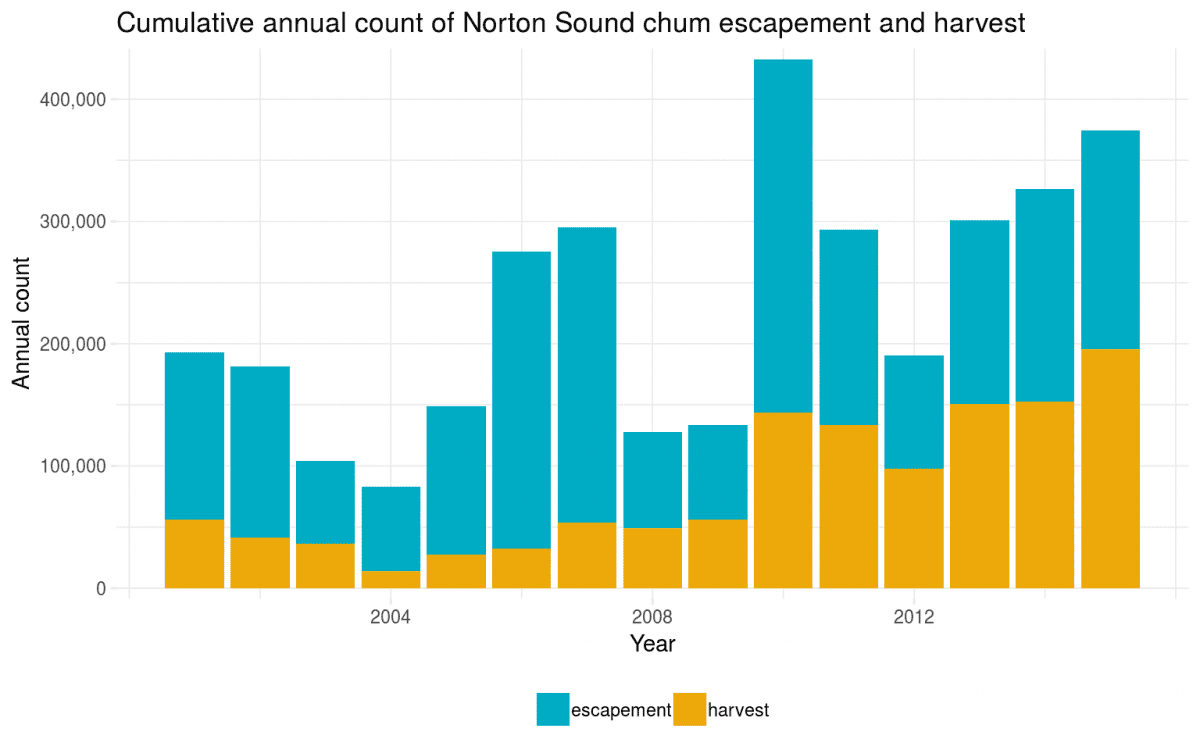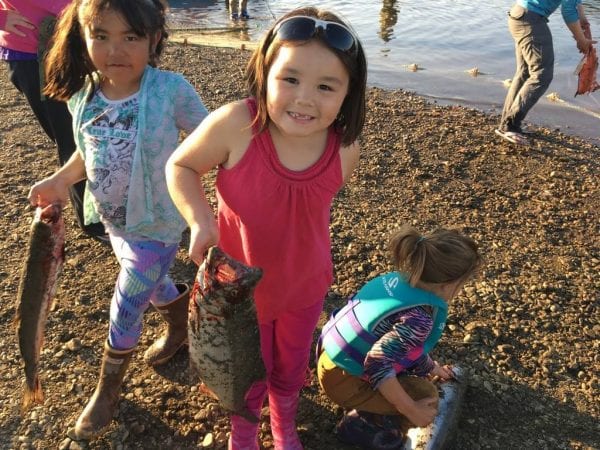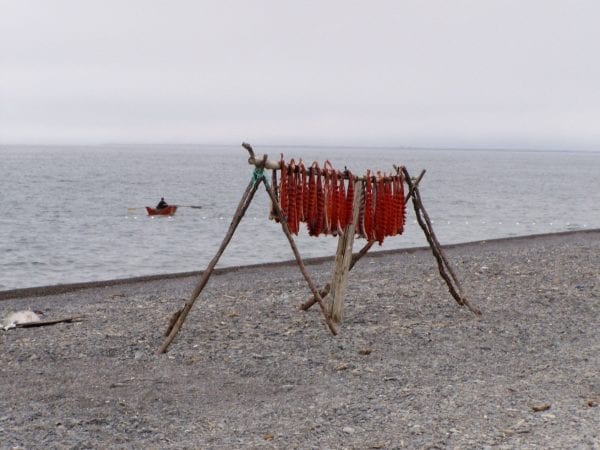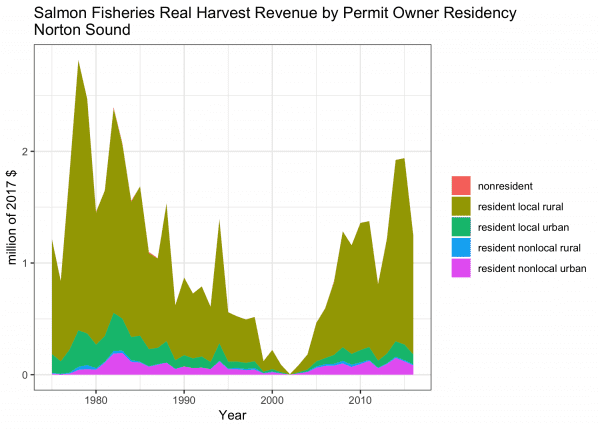Burch, E. S. (1998). The Iñupiaq Eskimo Nations of Northwest Alaska. Fairbanks, Alaska: University of Alaska Press.
Fall, James A. et al. 2018. Alaska Subsistence and Personal Use Salmon Fisheries 2015 Annual Report. Alaska Department of Fish and Game, Division of Subsistence Technical Paper No. 440. Anchorage.
Jenkins, D. (2015). Impacts of neoliberal policies on non-market fishing economies on the Yukon River, Alaska. Marine Policy, 61, 356–365. https://doi.org/10.1016/j.marpol.2014.12.004
Magdanz James and Annie Olanna. 1984. Controls on Fishing Behavior on the Nome River. Alaska Department of Fish and Game, Division of Subsistence Technical Paper No. 102. Nome.
Magdanz, James. 1992. Subsistence Salmon Fishing by Permit in the Nome Subdistrict and Portions of the Port Clarence District, 1975 – 91. Alaska Department of Fish and Game, Division of Subsistence Technical Paper No. 220. Juneau.
Magdanz, James. S. 2007. Customary Trade and Barter in Fish in the Seward Peninsula Area, Alaska. Alaska Department of Fish and Game, Division of Subsistence Technical Paper No. 328. Juneau.
Magdanz, J. S., Tahbone, S., Ahmasuk, A., Koster, D. S., & Davis, B. L. (2007). Customary Trade and Barter in Fish in the Seward Peninsula Area, Alaska (Technical Paper No. 328). Juneau, Alaska: Alaska Department of Fish and Game.
Magdanz, James S. et al. 2009. Patterns and Trends in Subsistence Salmon Harvests, Norton Sound-Port Clarence Area, Alaska 1994 – 2003. In Pacific Salmon: Ecology and Management of Western Alaska’s Populations, Charles C. Krueger and Christian E. Zimmerman, editors, pp 395 – 431. American Fisheries Society Symposium 70: Proceedings of the symposium Sustainability of the Arctic-Yukon-Kuskokwim Salmon Fisheries. Bethesda, Maryland: American Fisheries Society.
Menard, J., Soong, J., Kent, S., Harlan, L., and Leon, J. (2017). 2015 Annual management report for Norton Sound, Port Clarence, and Arctic, Kotzebue Areas (Fishery Management Report No. 17-15) (p. 230). Anchorage, Alaska: Alaska Department of Fish and Game.
Raymond-Yakoubian, B., & Raymond-Yakoubian, J. (2015). “Always taught not to waste”: Traditional Knowledge and Norton Sound/Bering Strait Salmon Populations (2015 Arctic-Yukon-Kuskokwim Sustainable Salmon Initiative Project 1333). Retrieved from http://www.kawerak.org/forms/nr/TK%20of%20Salmon%20Final%20Report.pdf





